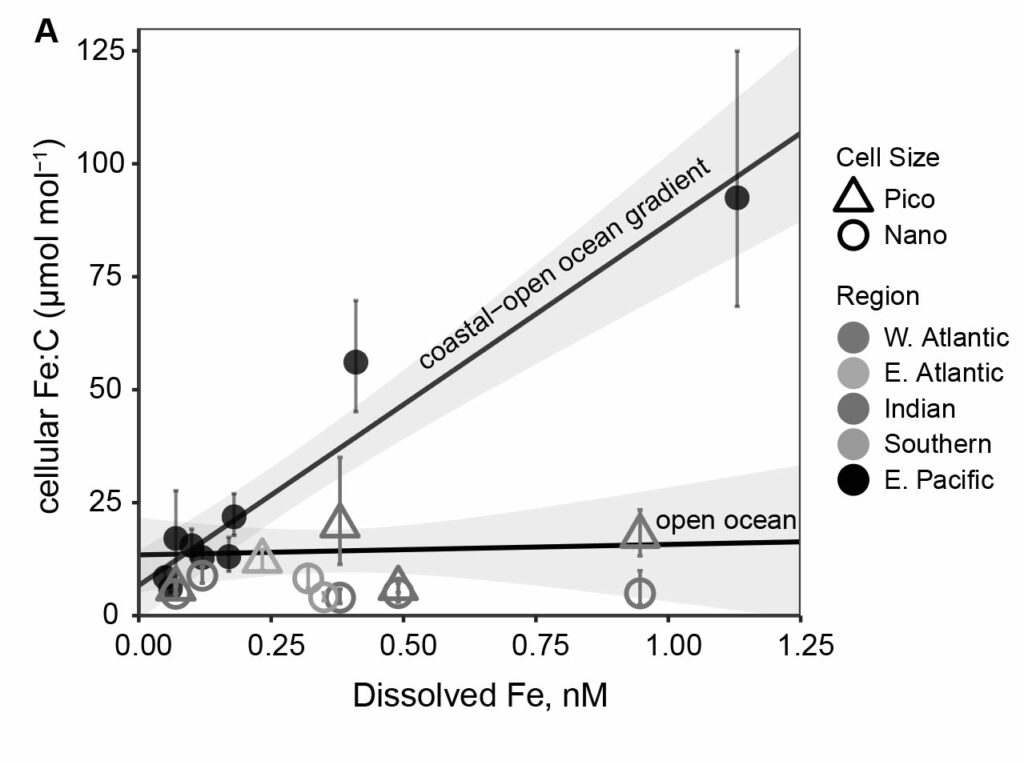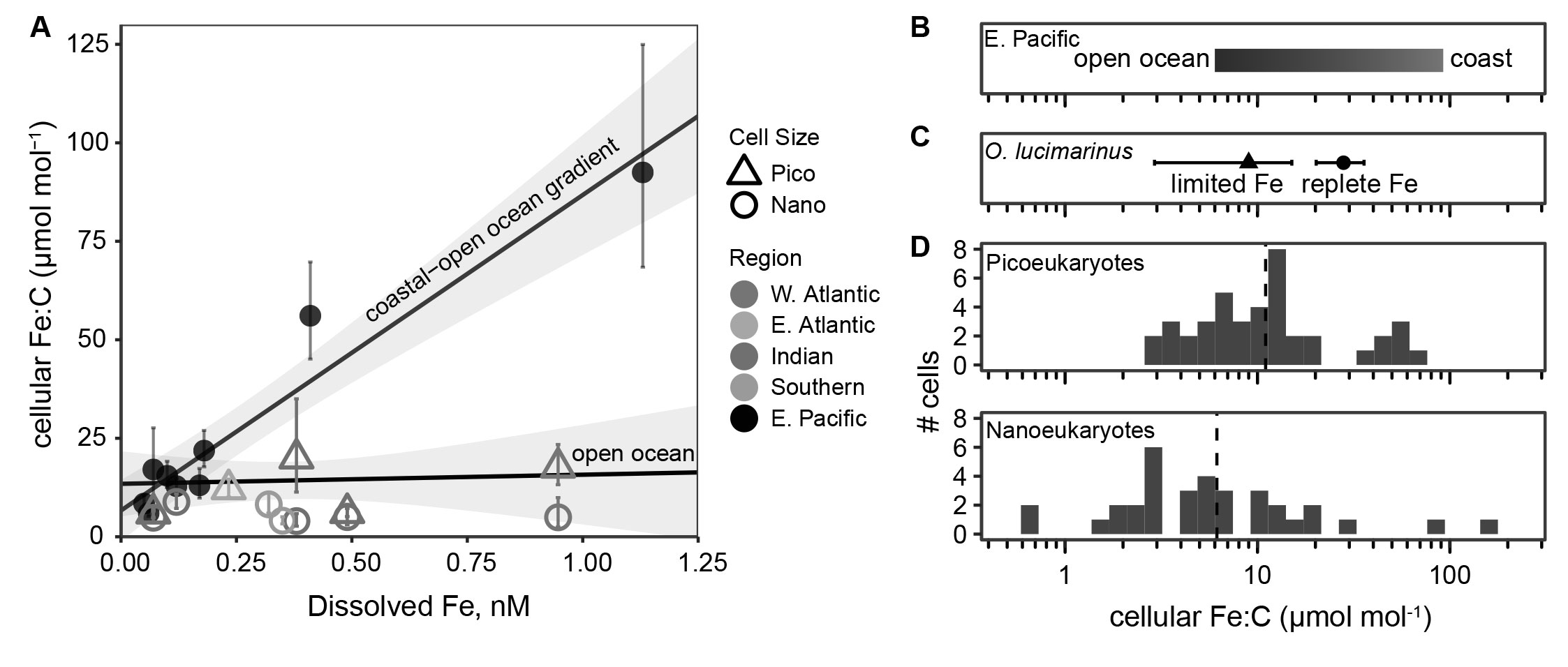Trace metal quotas in small flagellates: diatoms are challenged!
Micronutrients like iron, zinc, and other trace metals are in short supply in many open-ocean regions and considered a limiting factor for phytoplankton development. Small autotrophic flagellates are important members of the ecosystem. Despite their abundance, little is known about these cells’ trace metal contents, contrasting with what is known for larger phytoplankton. Sofen and colleagues (2022, see reference below) found that in natural plankton assemblages (from 4 different open-ocean biogeochemical areas) and in culture, small flagellates operated at the lower range of iron quotas typically observed for diatoms. This is an important distinction since our current understanding of phytoplankton metal physiology comes mostly from work with diatoms, but smaller taxa also play a key role in the ecology and chemistry of these regions, even when iron is available in excess. This adaptative strategy may give them a competitive advantage against plankton with higher metal demands.
The authors recommend to use their results to update parameters in biogeochemical models to reflect the distinct physiology of pico-/nanophytoplankton.


Reference:
Sofen, L. E., Antipova, O. A., Ellwood, M. J., Gilbert, N. E., LeCleir, G. R., Lohan, M. C., Mahaffey, C., Mann, E. L., Ohnemus, D. C., Wilhelm, S. W., & Twining, B. S. (2022). Trace metal contents of autotrophic flagellates from contrasting open‐ocean ecosystems. Limnology and Oceanography Letters, 7(4), 354–362. Access the paper: 10.1002/lol2.10258
